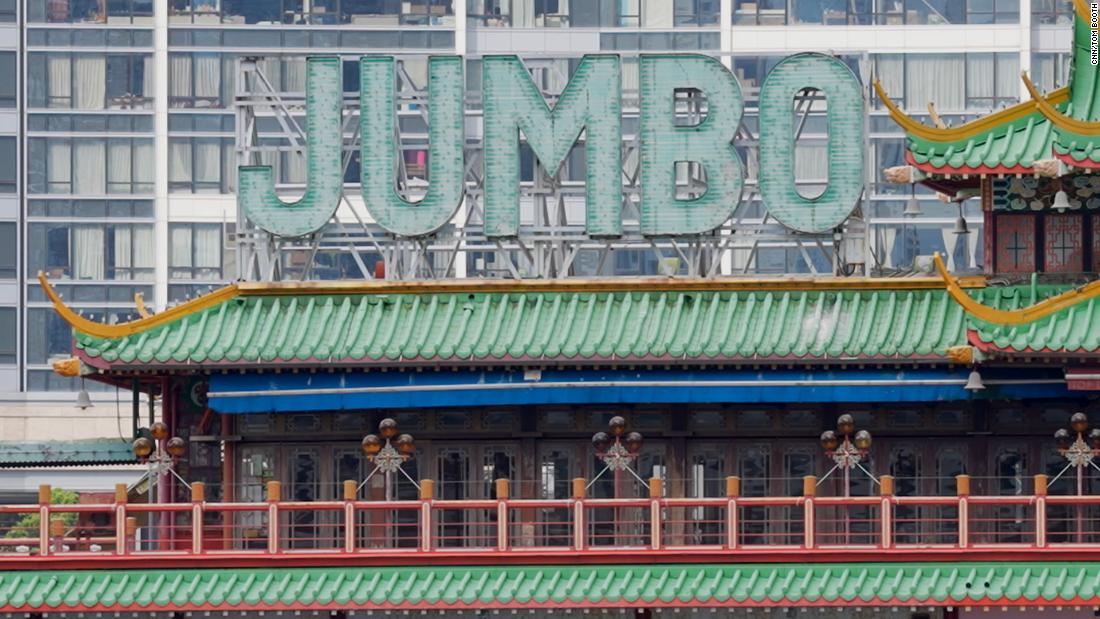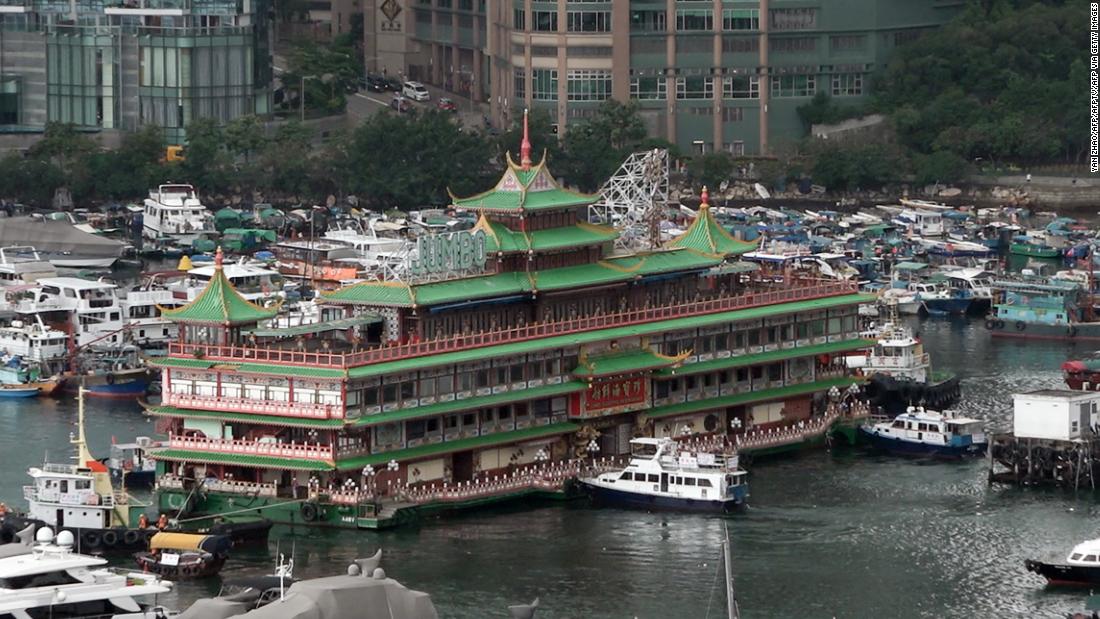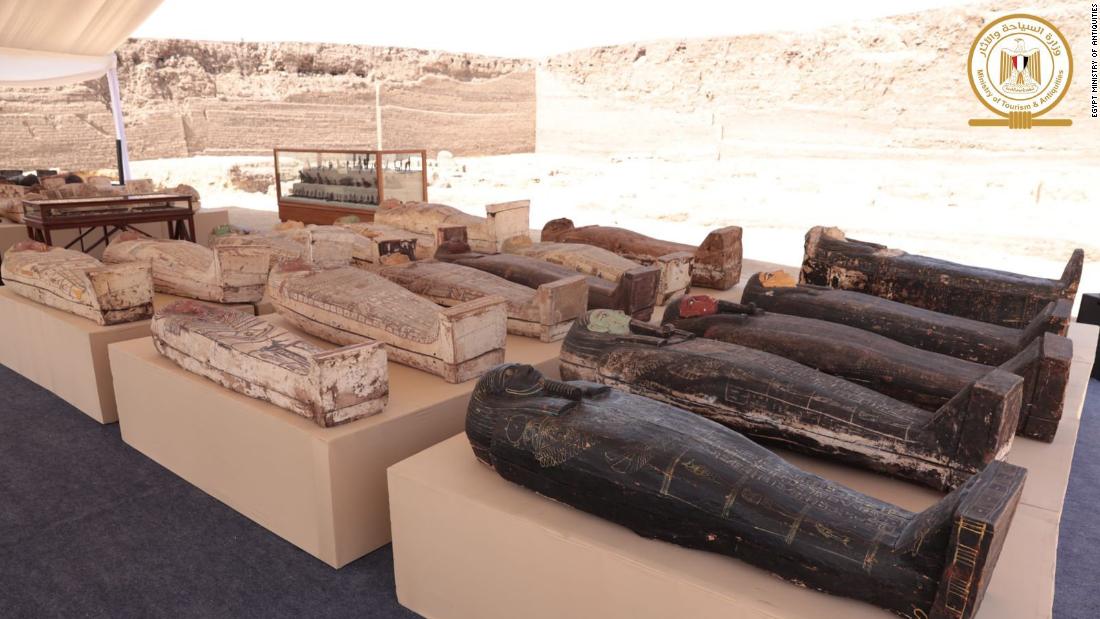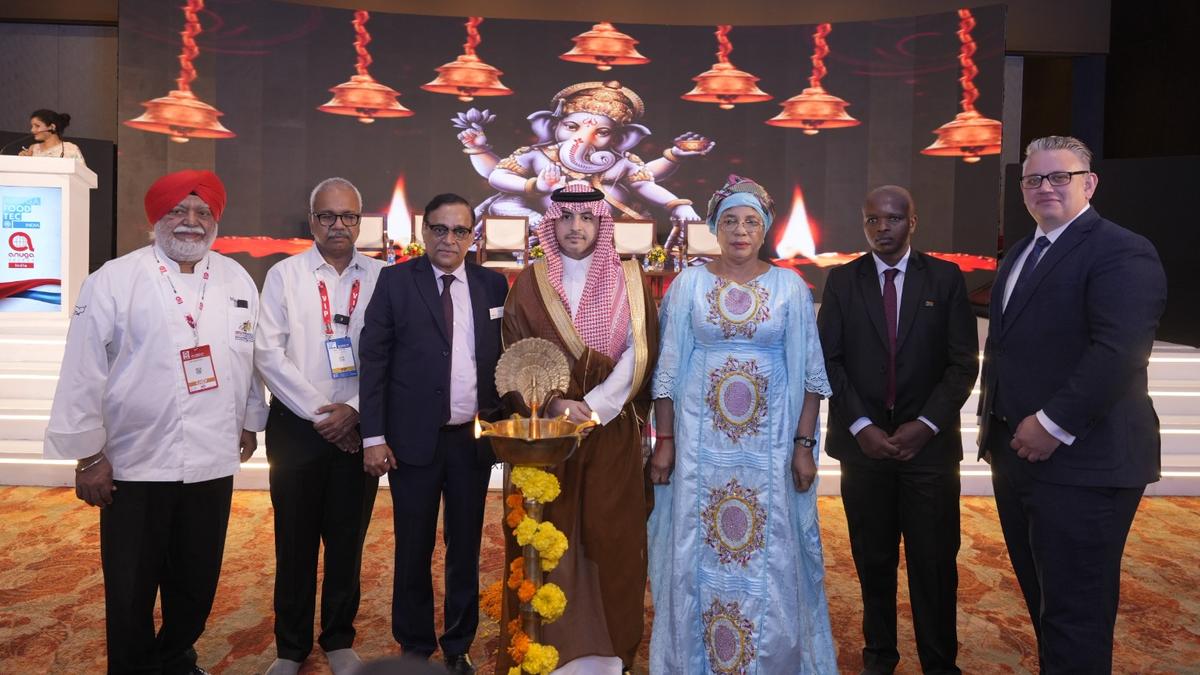Locals gathered along the waterfront to give the floating restaurant its final farewell.
Measuring about 260 feet long, the colossal three-story Jumbo Floating Restaurant was famous for its gigantic green and red neon sign reading “foon ying gwong lam,” Chinese for “welcome.” In its heyday, it was part of the largest floating restaurant in the world.
For nearly half a century, it was the main boat of Jumbo Kingdom, which also included the older and smaller sister restaurant boat Tai Pak (dating back to 1952), a barge for seafood tanks, a 130-foot-long kitchen boat and eight small ferries to transport visitors from two nearby piers.
In recent years, Jumbo Floating Restaurant was the only one of the group that was operational and open to diners.
“Jumbo Floating Restaurant has left Hong Kong today,” Aberdeen Restaurant Enterprises Limited, the company that owns and operates Jumbo Kingdom, confirmed in a statement released after the towing was completed.
“A unique icon for residents and tourists alike, Jumbo Floating Restaurant has stood proud in the Southern District of Hong Kong Island for the past 46 years. Throughout this journey, it has been a great honor for us to share beautiful collective memories with local and foreign visitors.
“We sincerely thank you all for your love and care. We take this opportunity to send you our best wishes for a brighter future,” the statement said.
Remembering an icon
It was a much-loved neighbor of CNN’s Hong Kong office. On a sunny day, Jumbo Kingdom had been a favorite subject to photograph from the office’s windows.
The restaurant certainly looked worn down, compared to its glorious days, but still exuded a glamorous old-world charm.
The approach to the floating restaurant — only accessible via a special Jumbo-branded boat — was one of the most dramatic restaurant entrances in the world.
Upon arrival, you’d see the lavish Imperial-style façade with reliefs covering the entire wall, massive commissioned paintings in the stairwell and plenty of colorful Chinese-style motifs including a golden throne in the dining hall.
A young Kenny Chan poses at Jumbo in the 1990s.
Courtesy Seayou Explorer Travel Limited
Chan’s parents were one of the fishing village families living in Aberdeen Typhoon Shelter. His wife also grew up on a boat.
“I can still recall how excited I was, as a kid, whenever I had the chance to hop on a sampan and visit Jumbo. The ride wasn’t just transportation — it made us feel like we were visiting a palace. There’s no other place in Hong Kong that could deliver the same feeling.”
Those fond memories of his childhood at the Aberdeen fishing village in the harbor inspired him to found Seayou in 2018. The company offers private charter services as well as a sampan cultural tour called Aberdeen 1773 Cultural Tour that included a stop at the Jumbo Kingdom before its departure.
“The cultural, symbolic and tourism value of Jumbo is significant and can’t be quantified… We do understand that maintaining Jumbo may be challenging. We’re just downhearted to see the government jeopardizing its own plan [to invigorate the neighborhood] set in 2020 and their decision to ‘not interfere’ [in Jumbo’s fate],” says Chan.

Members of the Chan family attend a wedding banquet at Jumbo in the 2010s.
Courtesy Seayou Explorer Travel Limited
A floating marvel
In its golden days, the restaurant vessel starred in many local and international movies including “Enter the Dragon” (starring Bruce Lee in front of Tai Pak), “Spider-Man: The Dragon’s Challenge” and Stephen Chow’s comedy “God of Cookery.”
It was a “must” stop for visiting celebrities including Queen Elizabeth II and the late Prince Philip, Jimmy Carter, Chow Yun Fat, Elizabeth Taylor and Tom Cruise.
“Some dismissed its architectural importance as it was only a ‘faux’ imperial design but I disagree — it’s an interesting attempt [at] transforming a floating space [into] an ancient Chinese palace. If we look at the historical context, it was built at a time when this imperial-style Chinese aesthetic wasn’t even encouraged in China (“Old Things” were to be removed during the Cultural Revolution). So Jumbo Kingdom reflected how Chinese in Hong Kong then had a greater yearning or passion for these old Chinese traditions.”

A view of the restaurant at night, lit up by its famous neon lights.
courtesy of Jumbo Kingdom
The end of an era
Of course, its golden age didn’t last.
As the fishing population at Aberdeen Harbour dwindled, Jumbo Kingdom has become less popular among locals and tourists.
In March 2020, the restaurant’s owners said that they had accumulated a loss of over HKD100 million ($13 million) and announced that the restaurant would be closed until further notice.
Several proposals had been put forward to save the historic icon, but its high maintenance cost had deterred potential investors.
Hong Kong’s government didn’t seem to be eager to get involved, either.
The Antiquities Advisory Board ruled that ships — unlike buildings on land — weren’t a part of the Antiquities and Monuments Ordinance, meaning Jumbo wasn’t eligible for city protection.
Without a “white knight” rescuer that the city had been waiting for, the group decided to move the Jumbo Floating Restaurant, the main boat, to an undisclosed shipyard away from Hong Kong before its operating license expires this June.
Tai Pak, the smaller and older boat, as well as the recently capsized kitchen boat, are currently still parked at the harbor. Nothing has been confirmed about the future of these boats so far.
No matter what happens next, Hong Kong has lost one of the largest — and shiniest — jewels in its crown.








